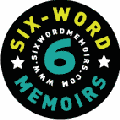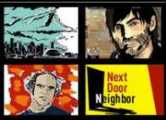Shrinks Get All the Good Stories
January 10th, 2007 by katherine Over at The Morning News, Robert Birnbaum has an extended interview with Believer editor and novelist Heidi Julavits, about therapy and her book The Uses of Enchantment.
Over at The Morning News, Robert Birnbaum has an extended interview with Believer editor and novelist Heidi Julavits, about therapy and her book The Uses of Enchantment.
In the conversation, Julavits opines that therapy is the premier locus for storytelling (at least when it comes to stories about ourselves) in the modern age. She says that The Uses of Enchantment grew, for her, out of
…the intersection for me of psychoanalysis or therapy as it’s usually practiced and story telling. And how to me that act of going to therapy has become our mode of oral story telling. But I also think that mode—as much as you are hearkening back to these old story templates, and you make yourself—you are the bedraggled Cinderella heroine who is being mistreated by everyone but you emerge in the end victorious and I feel as though it’s obviously a very hermetic experience now. It’s not as at all this cultural sharing kind of thing, so that we do kind of all walk around with our own kind of story bubble, you know?
RB: Because it’s been superseded by other kinds of self-help strategies and gimmicks?
HJ: More I mean the act of entertaining somebody with a story that used to be a story that had to have deep cultural significance and everybody could relate to, and now it’s just a story about you.
So we tell stories about ourselves to our therapists (and, I’d argue, to our friends and intimates) all the time–to the exclusion, Julavits argues, of broader narratives. All our stories are personal stories, now, she says. And none of them are universal?
Are there any grand narratives that still apply, culture-wide? Or just a million voices stammering similar but ultimately disparate tales into the ears of a million kindly, well-paid listeners?




